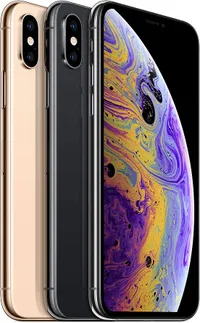Pixel 3 vs. iPhone XS: Why Apple (Barely) Wins
Google's Pixel 3 packs AI smarts and a breathtaking camera. But how does it compare to Apple's nearly perfect iPhone XS?
In search of the year's best smartphone? If it's a smaller device you want — something with a screen that doesn't top 6 inches — you'd be hard-pressed to find anything that competes with Google’s Pixel 3 and Apple’s iPhone XS.

Both of these flagships have incredible cameras and gorgeous displays. They may run different operating systems, but they're both at the head of their respective classes when it comes to offering the most premium software experiences in the mobile space.
Ultimately, only one can win out in this Pixel 3/iPhone XS comparison — but it's going to be a close call.
Pixel 3 vs. iPhone XS: The Specs
| Pixel 3 | iPhone XS | |
| Price | $799, $899 | $999, $1,149, $1,349 |
| Display (Resolution) | 5.5-inch OLED (2160 x 1080) | 5.8-inch OLED (2,436 x 1,125) |
| CPU | Snapdragon 845 | A12 Bionic |
| RAM | 4GB | 4GB |
| Storage | 64GB, 128GB | 64GB, 128GB, 512GB |
| Rear Camera | 12.2 MP (ƒ/1.8) | Dual 12 MP wide (ƒ/1.8) and telephoto (ƒ/2.4) |
| Front Camera | Dual 8 MP standard (ƒ/1.8) and wide (ƒ/2.2) | 7 MP (ƒ/2.2) |
| Battery | 2,915 mAh | 2,942 (based on regulatory filings) |
| Size | 5.7 x 2.7 x 0.3 inches | 5.7 x 2.8 x 0.3 inches |
| Weight | 5.3 ounces | 6.2 ounces |
Design
Although similar in size, the Pixel 3 and iPhone XS have very different interpretations of what defines a premium phone.
With the Pixel 3, Google opted for a 5.5-inch, 18:9 panel sandwiched between a pair of top and bottom bezels that aren’t necessarily thick, but aren’t particularly slim, either. The look is slightly dated look compared with the nearly all-screen iPhone XS, whose borderless design is interrupted only by that pesky notch.
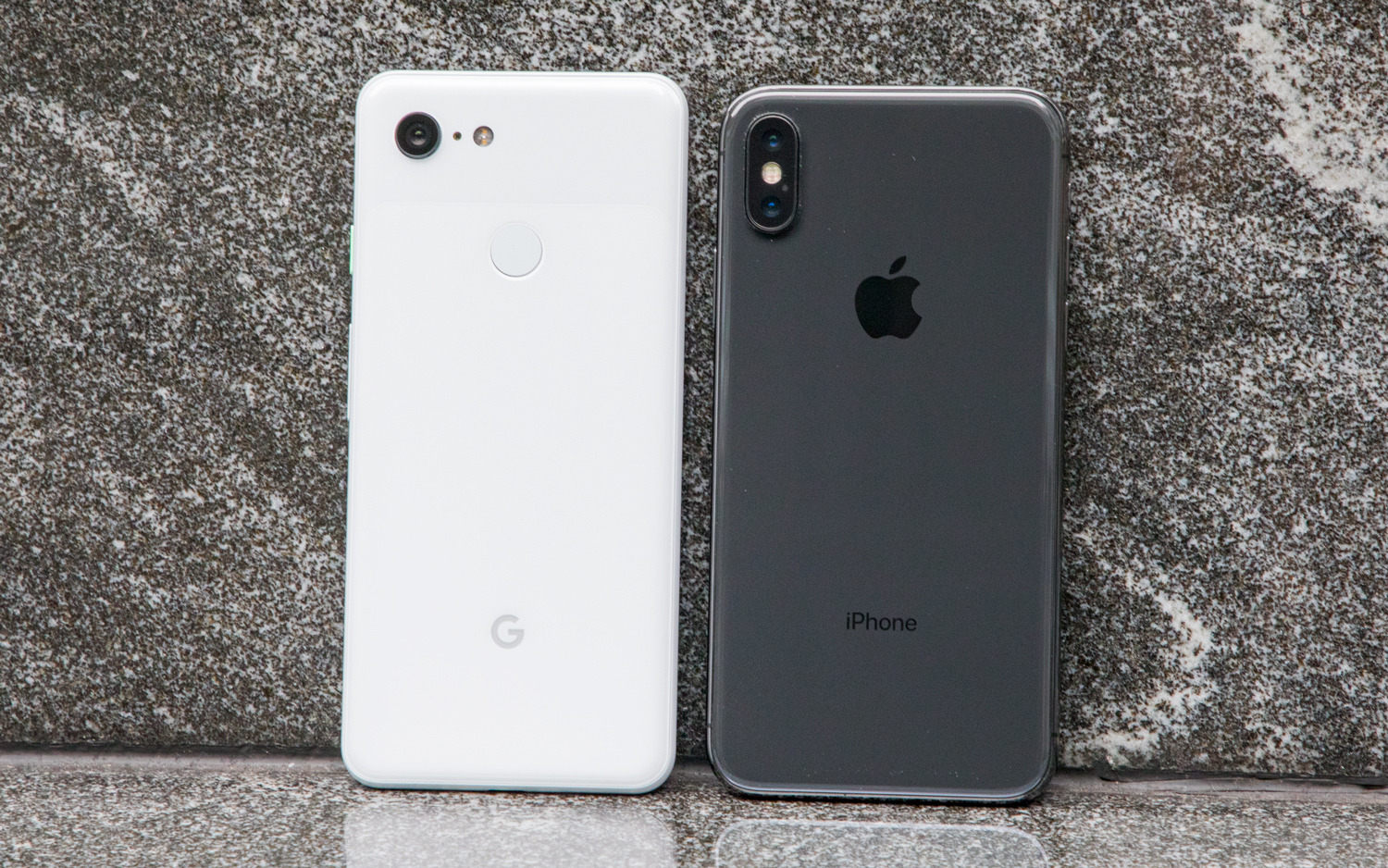
Around the sides, the iPhone XS incorporates more premium-feeling stainless steel to the Pixel 3's glossy aluminum. Both handsets employ glass backs allowing them to charge wirelessly, though a significant portion of the Pixel 3's is finished with an etching process that delivers a matte texture. However, early reports indicate this surface may be more susceptible to scratching.
MORE: Best Smartphones on the Market Now
The Pixel 3 wins points for its relative lightness compared with the iPhone XS (it's an ounce lighter), and those who have a distaste for notches will surely prefer Google's effort to Apple's latest range of devices (or, for that matter, any other flagship). That said, the iPhone XS is undoubtedly the direction the industry is headed, and the iPhone X's success proves that Apple's struck a fashionable formula that consumers love, earning it the win here.
Get instant access to breaking news, the hottest reviews, great deals and helpful tips.
Winner: iPhone XS
Display
At long last, Google gave the Pixel 3 the OLED display it desperately needed to contend with Apple and Samsung’s best efforts. Unfortunately though, the Pixel 3's screen falls just shy of being the finest we've seen among smartphones.

For one, Apple's 5.8-inch OLED panel in the iPhone XS is bigger than the 5.5-inch one in the Pixel 3. But the XS's display is also brighter and a little more accurate as well. The iPhone's peak full-screen brightness of 604 nits handily beats the 401-nit Pixel 3 (including the 488-nit smartphone average). Additionally, the iPhone's Delta-E color accuracy score of 0.22 yields slightly more realistic colors, compared with the Pixel 3 and its 0.44 rating. (Numbers closer to zero are better.)
The iPhone XS's panel may be just a little better, though that's not to say the Pixel 3' is bad by any stretch. The colors on Google's flagship are vibrant, as evidenced by its 202-percent coverage of the sRGB color space. (In comparison, the iPhone XS covers 123 percent.) The Pixel 3 also offers multiple display profiles for more or less-saturated colors, while the iPhone XS provides no such option to users.
Winner: iPhone XS
Camera
While the iPhone XS has two 12-megapixel cameras on the back — one a standard lens and the other a telephoto — the Pixel 3 has only one. However, Google's phone can still pull off many of the same tricks Apple's can, including shallow depth-of-field portraits through both its front and rear cameras, thanks to AI-powered computational photography.
MORE: Pixel 3 and iPhone XS Photography: How They Stack Up
In fact, the Pixel 3 has a few extra tricks. Top Shot is one such addition: it captures multiple frames before and after taking photos, then uses AI to recommend the best one. The Pixel 3's Super Res Zoom uses natural movement to enhance digital zoom, producing quality sometimes on a par with what you get from 2x optical zoom in some phones. Later this year, all Pixel phones new and old will get Night Sight, a mode that Google says should greatly enhance low-light photography.
In this Portrait Mode comparison, I was astonished by how much more color and detail Google's camera conveyed. However, the iPhone XS did a better job separating the foreground from the background, especially regarding the bokeh surrounding my colleague Caitlin's hair.
In this second comparison, taken outside New York's Herald Square, the iPhone XS better exposes some of the buildings in the distance without blowing out a significant portion of the frame. But the Pixel 3 manages to avoid the warm haziness that mars the iPhone's rendition. Details are sharper on the Google phone, too.
Here, the Pixel 3's Super Res Zoom feature was used to close in on Grand Central Terminal 's iconic clock in the center of its Main Concourse. It's astonishing how well Google's new digital zoom fakes the clarity you get with an optical solution. You'd be hard-pressed to notice any differences.
The Pixel 3 is the phone you want for selfies, as evidenced by this comparison. I love how Google's handset brings out the rust color of my beanie, and highlights detail in my face without being overly grainy. There's nothing expressly wrong with the iPhone XS' attempt, but it just looks a little duller.
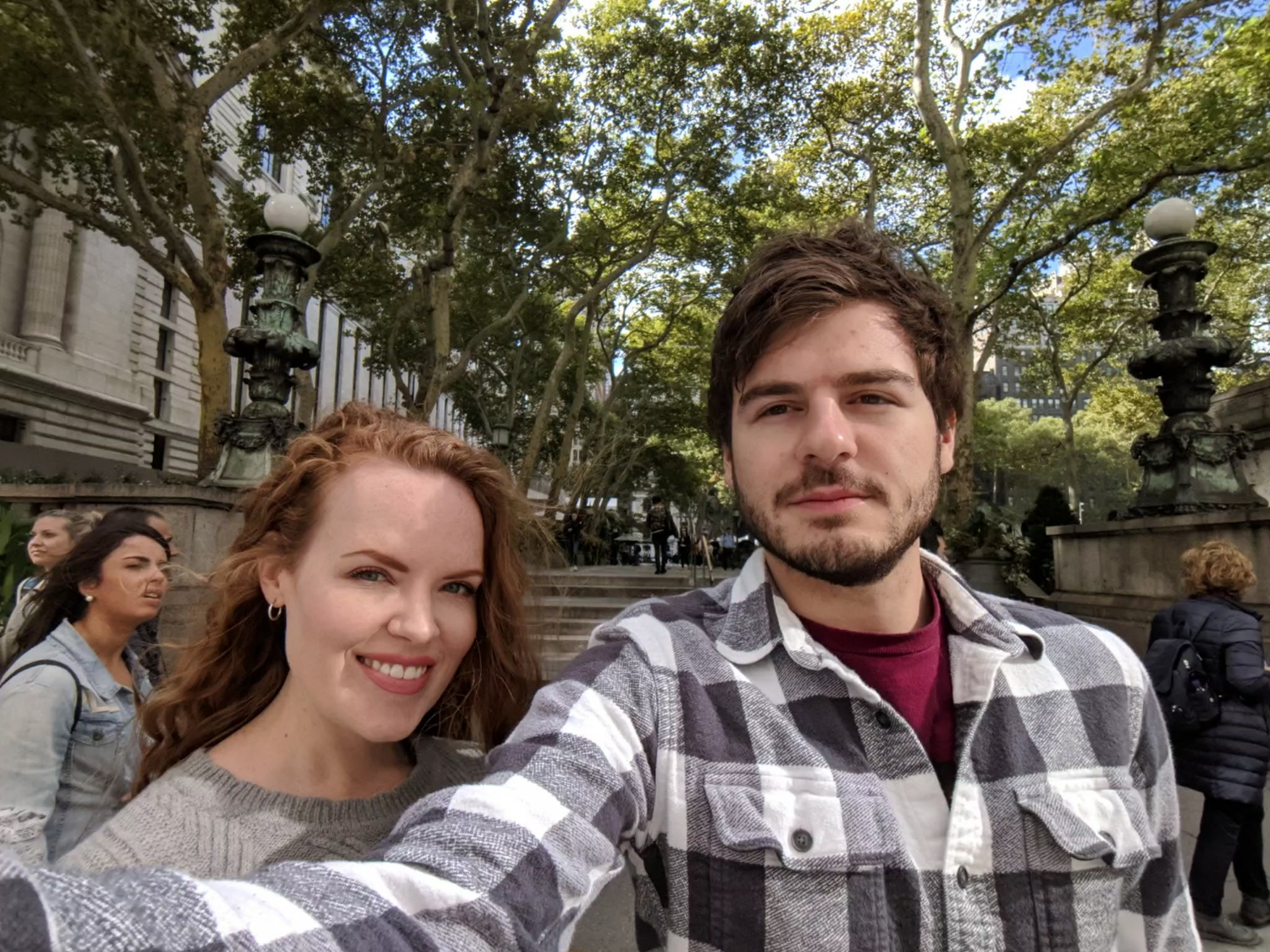
Up front, the Pixel 3 supplements its main camera with a secondary wide-angle lens. This lens captures 184 percent more of your surroundings in the frame than what the iPhone XS provides, making it ideal for group shots like the example above.
Overall, the iPhone XS is among the best phones for photography. But the Pixel 3's new features and impressive results give it the edge over Apple's latest — and, really, all smartphones.
Winner: Pixel 3
Performance
Google may have engineered the Pixel 3 with the same internals as the best Android phones of 2018, but it still can't compete with the raw speed of Apple's hardware.
MORE: iPhone XS and XS Max Benchmarked: World's Fastest Phones (Again)
The Pixel 3 packs Qualcomm's Snapdragon 845 processor and 4GB of RAM. You'll find the same amount of memory in the iPhone XS, but that phone is powered by Apple's own A12 Bionic chipset. In Geekbench 4, a benchmark that measures overall system performance, the A12 Bionic proves significantly faster, with a multicore score of 11,420 to the Pixel 3's 7,316. The iPhone XS also finished our video conversion test in considerably less time than the Pixel 3 (or any other Android handset, for that matter) — 39 seconds versus 2 minutes and 53 seconds using Adobe's Premiere Clip app.
When it comes to graphics performance, however, numbers suggest the Pixel 3 is actually a bit more capable. Google's flagship delivered a score of 4,400 in 3DMark's Sling Shot Extreme OpenGL ES 3.1 test, edging the iPhone XS' 4,244. Still, even with Qualcomm's best hardware, Google can't overcome Apple's margin here.
Winner: iPhone XS
Battery and Charging
The Pixel 3's 2,915-mAh battery is larger than the iPhone XS' 2,658-mAh power pack. However, Google's size advantage didn’t make much of a difference in our testing.
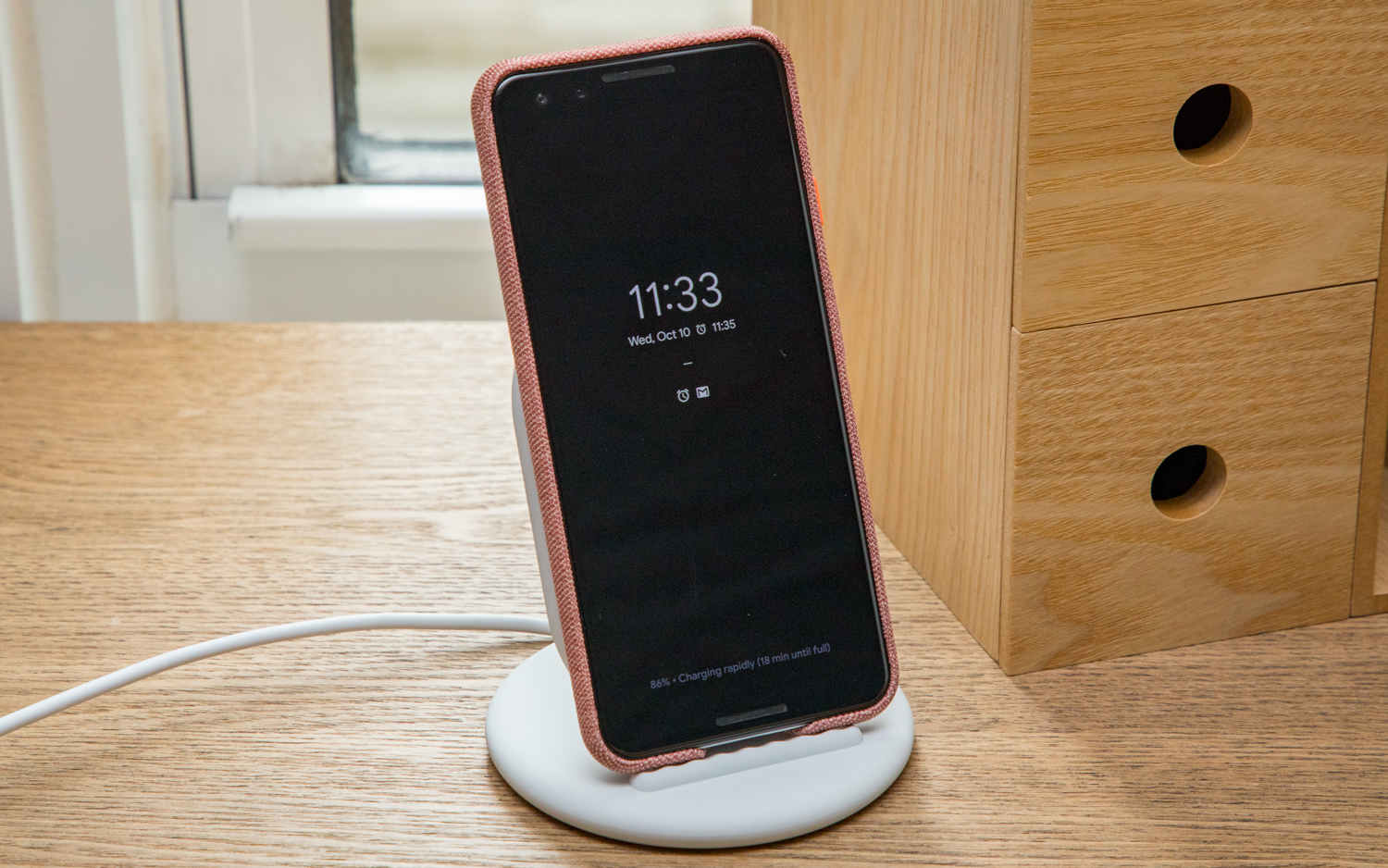
The iPhone XS lasted nearly 1.5 hours more than the Pixel 3 when streaming websites endlessly over T-Mobile's LTE network. The average for smartphones is 9 hours and 48 minutes, and the iPhone fell just shy of that at 9:41. The Pixel 3 gave up after 8:27.
While the iPhone XS ultimately wins for its longer-lasting battery, at least Google gives you the ability to charge as quickly as possible with the included adapter. Apple still forces iPhone owners to shell out even more cash for a USB Type-C compatible charger that enables the highest speeds.
The Pixel 3 can also charge wirelessly at a faster pace than Apple's phones, so long as you use Google's $79 Pixel Stand charger. The Pixel 3 has a max of 10W for wireless charging, while the iPhone XS tops out at 7.5W.
Winner: iPhone XS
Software and Special Features
Both Google and Apple’' latest flagships sport the most up-to-date version of their respective operating systems. That means Android 9 Pie in the Pixel 3, and iOS 12 in the iPhone XS.
Regarding exclusive features, the iPhone XS is the only device capable of 3D facial authentication. Meanwhile, the Pixel 3 has Call Screen, one of Google's most exciting additions for Pixel 3 that leverages the Google Assistant to respond to and transcribe calls from unknown numbers.
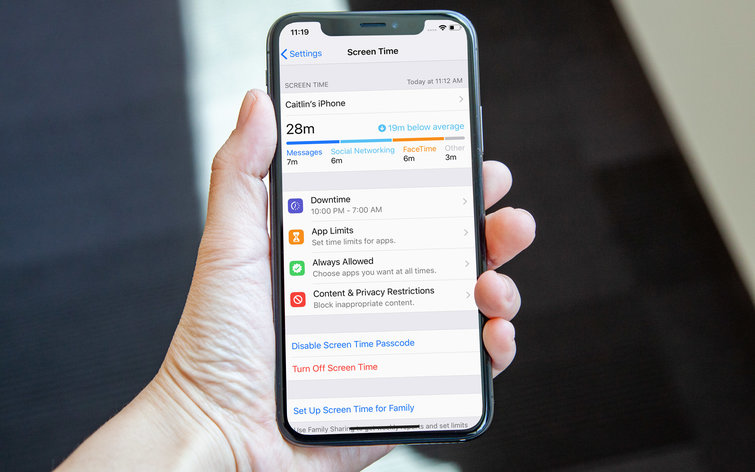
Additionally, Android 9 Pie also comes with a revised interface designed around AI, that serves up the apps and commands it thinks you're most likely to use. Meanwhile, iOS 12 introduces Siri Shortcuts, commands you can create that trigger a succession of actions you specify. Google Assistant's Routines operate in a similar manner.
Both operating systems provide dedicated tools to help you manage the amount of time you use your phone. Better yet, Android and iOS now pay attention to which alerts you respond to, and which ones you dismiss. When either phone notices that you tend to ignore a certain group of notifications — or perhaps notifications from a specific app — it will ask you if you'd like to stop receiving them.
Ultimately, the operating system that suits you is a matter of preference. Android and iOS are both highly refined at this point. That said, the Pixel 3 goes a little further with AI than the iPhone XS does, and the ways in which it implements machine learning actually make your life easier.
Winner: Pixel 3
Value and Availability
Here's where Google's handset makes up some considerable ground. While the Verizon-exclusive Pixel 3 isn't available through the same breadth of carriers as the iPhone XS, it also doesn't cost $1,000.
The Pixel starts at $799 for a 64GB model, while the iPhone XS starts at $200 more for the same amount of storage. Neither of these phones have a microSD slot for expandable storage either, which means you're pretty much stuck with whatever capacity you buy. However, to mitigate this somewhat Google does allow unlimited full-quality photo storing in the cloud via Google Photos for two years if you own a Pixel.
If you decide to spring for a higher capacity model, you're looking at $899 for the 128GB Pixel 2 versus $1,149 for the 256GB iPhone XS. There's also a 512GB iPhone XS for $1,349. Both phones can be bought unlocked and are compatible with all networks, whether GSM-based, like AT&T and T-Mobile, or CDMA-based. like Verizon and Sprint.
Winner: Pixel 3
Overall Winner: iPhone XS
| Phone | Pixel 3 | iPhone XS |
| Design (10) | 7 | 9 |
| Display (15) | 13 | 14 |
| Cameras (20) | 19 | 17 |
| Performance (10) | 8 | 10 |
| Battery and Charging (20) | 14 | 16 |
| Software and Special Features (10) | 9 | 8 |
| Value and Availability (15) | 12 | 10 |
| Overall (100) | 82 | 84 |
The Pixel 3 is the finest Android phone you're likely to see all year, and there's no topping its camera. But the iPhone XS is a more well-rounded device. It sports faster performance, a slightly better display, a more futuristic design, battery life that's a little bit longer and even though it's more expensive, it is available on all carriers.
To Google's credit, though, the Pixel 3 is considerably cheaper, takes a more novel approach to software and AI and its camera wins out most of the time. However, those interested in the best flagship phone money can buy are going to want to check out Apple's latest premium iPhones.
Credit: Tom's Guide
Adam Ismail is a staff writer at Jalopnik and previously worked on Tom's Guide covering smartphones, car tech and gaming. His love for all things mobile began with the original Motorola Droid; since then he’s owned a variety of Android and iOS-powered handsets, refusing to stay loyal to one platform. His work has also appeared on Digital Trends and GTPlanet. When he’s not fiddling with the latest devices, he’s at an indie pop show, recording a podcast or playing Sega Dreamcast.
-
squirtbutt I have to disagree, i own the Pixel 3 XL, it's design is better imo, Better Camera, that's huge in my book, the above pictures speak for themselves, i mean wow.Reply
The Pie OS is leagues above apples new 12.1 (its just bad)
You'd be very hard pressed to notice any difference in the screen quality between the two.
And a better GPU in the Pixel, heck yeah.
Winner: Pixel 3 hands down.
